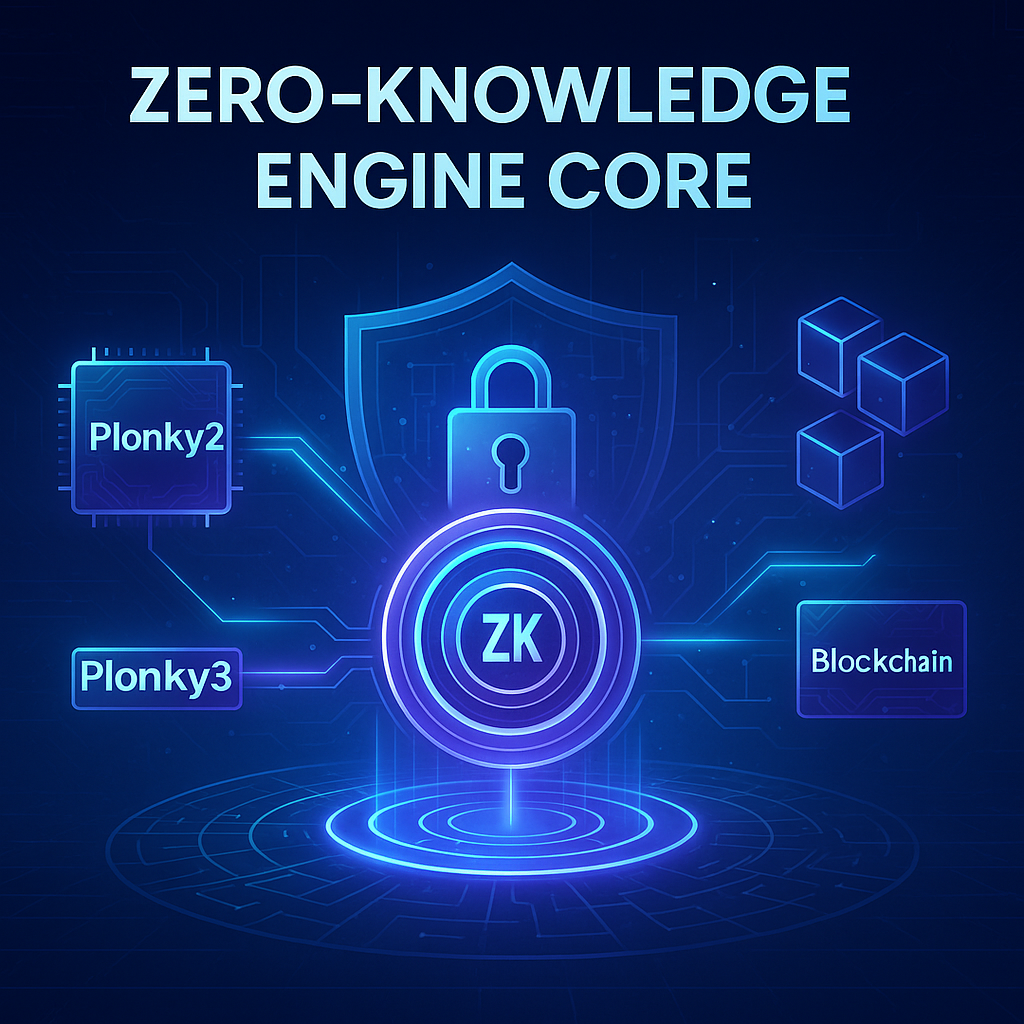Abstract / Overview
Plonky2 and Plonky3 are advanced zero-knowledge (ZK) proof frameworks developed by Polygon Zero. They deliver high-performance, recursive proofs while maintaining transparency and low computational overhead.
Plonky2 laid the foundation for recursive proof systems that enable proofs verifying other proofs efficiently. Plonky3 extends this with a modular, composable architecture, suitable for general-purpose cryptographic computation.

Conceptual Background
Zero-Knowledge Proofs (ZKPs) allow verification of computation without revealing private data. The challenge is achieving efficiency, composability, and security simultaneously.
Plonky2 and Plonky3 combine STARK-style transparency with SNARK-like succinctness and native recursion, making them highly efficient and scalable.
Evolution of the Framework
Plonky (original): Introduced efficient polynomial commitments and field arithmetic.
Plonky2: Enabled recursive proofs and practical scalability for blockchain systems.
Plonky3: Modularized the architecture for flexibility, improving integration with different cryptographic primitives and hardware targets.
System Architecture
1. Core Components
Field Arithmetic Engine: Optimized finite field computations using Rust.
FFT System: Fast Fourier Transform for polynomial evaluation, optimized for performance.
AIR/Circuit Layer: Defines arithmetic constraints and computation mapping.
Recursive Proof Composer: Handles proof composition, reducing verification costs dramatically.
2. Proof Lifecycle

Step-by-Step Walkthrough
Step 1: Define the Circuit
Plonky2/3 defines computational logic using constraint systems representing mathematical relationships.
use plonky2::field::types::*;
use plonky2::plonk::circuit_builder::CircuitBuilder;
fn example_circuit() {
let mut builder = CircuitBuilder::new();
let a = builder.add_virtual_target();
let b = builder.add_virtual_target();
let c = builder.add(a, b);
builder.register_public_input(c);
}
Step 2: Generate the Proof
The prover commits to all relevant polynomials and applies the Fast Reed–Solomon Interactive Oracle Proof (FRI) protocol.
use plonky2::plonk::prover::prove;
let proof = prove(&builder.build(), &witness_data);
Step 3: Verify or Aggregate Proofs
Recursive proofs can verify other proofs efficiently, reducing cost and computation depth.
use plonky2::plonk::verifier::verify;
verify(&proof, &public_inputs).unwrap();
Plonky3 extends this to allow cross-field and multi-system recursion.
Comparative Overview: Plonky2 vs. Plonky3
| Feature | Plonky2 | Plonky3 |
|---|
| Language | Rust | Rust (modular design) |
| Architecture | Monolithic | Modular, trait-based |
| Recursion | Native recursive proofs | Cross-field recursive proofs |
| Proof Type | zk-STARK-like hybrid | Multi-proof support |
| Speed | Sub-second for small circuits | Parallelized, hardware-accelerated |
| Primary Use | Polygon zkEVM | General-purpose cryptographic framework |
Use Cases
Blockchain Scaling: Aggregating multiple transactions into compact proofs.
Cross-Chain Verification: Proving computation across heterogeneous blockchain environments.
Privacy-Preserving Computation: Secure identity or data proofs without exposure.
Machine Learning Verification: Validating model inference without disclosing private data.
Regulatory Proof Systems: Proving compliance or state integrity in financial systems.
Limitations / Considerations
Memory Consumption: FFT-heavy computations can strain limited hardware.
Development Complexity: Recursive systems demand a strong mathematical understanding.
Tooling Maturity: Plonky3 APIs are evolving; documentation is improving.
Verifier Constraints: Recursive depth increases complexity on lightweight clients.
Optimization and Performance Tips
Use parallel FFT computation (via Rayon) for large proofs.
Optimize recursion depth to balance proof size and verification speed.
Cache polynomial evaluations to reduce recomputation.
Benchmark circuits using criterion to detect bottlenecks early.
Minimize field transitions by maintaining uniform field types across recursion layers.
Expert Insights
"Recursive proofs are the backbone of scalable cryptographic verification. Plonky3 modularizes recursion and proof composition at an unprecedented level."
— Polygon Zero Research Team, 2025
"Plonky3 pushes zero-knowledge performance into real-world usability — composable, fast, and cryptographically sound."
— Independent ZK Systems Research Group, 2025
Future Enhancements
GPU acceleration for FFT and FRI operations.
Multi-field recursion for hybrid proof composition.
WASM support for browser-based verification.
zkML integration for verifiable machine learning.
Formal verification layers for provable soundness guarantees.
FAQs
Q1. What are Plonky2 and Plonky3 written in?
Rust, for safety and low-level performance control.
Q2. Can Plonky3 verify Plonky2 proofs?
Yes. It provides backward compatibility through modular proof adapters.
Q3. How fast are Plonky proofs?
On typical 2025 CPUs, small circuits can be proven in under 0.2 seconds and verified in under 50 milliseconds.
Q4. Is Plonky3 open-source?
Yes, released under the MIT license with active community development.
Q5. What makes Plonky3 modular?
It decomposes the prover, verifier, and circuit systems into independent crates, allowing flexible extension and integration.
Conclusion
Plonky2 and Plonky3 represent a major evolution in the field of zero-knowledge computation. Plonky2 introduced scalable recursive proofs, and Plonky3 extends this architecture into a modular, high-performance cryptographic ecosystem.
They enable scalable verification for decentralized systems, privacy-focused applications, and verifiable computing, marking a key shift toward a trustless, efficient, and composable cryptographic future.